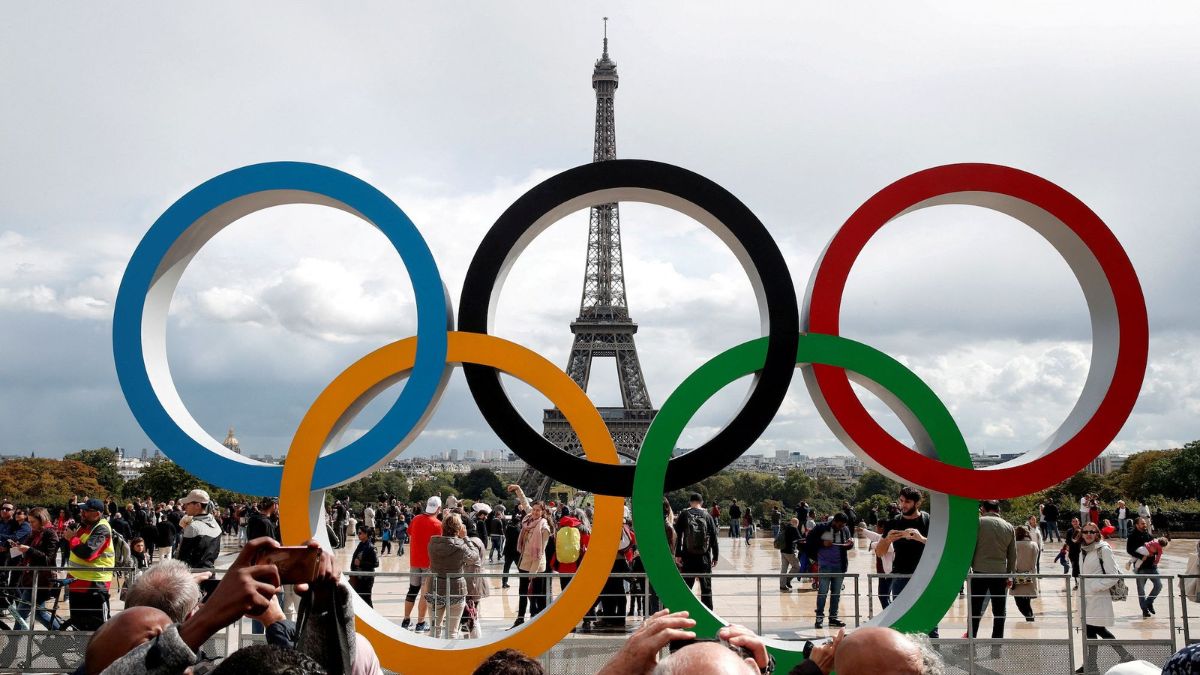

The Opening Ceremony of the Paris Olympics
A truncated history of France gives a warped view of freedom.
07/30/24
John Stonestreet and Timothy D Padgett

Though Christians can use the word “satanic” too often, it is appropriate in some cases. Some of us remember “backmasking,” a Christian youth group phenomenon from the 80s and 90s, when vinyl records were said to deliver satanic messages when played backward. If this were a device of the enemy, the messages were nearly impossible to understand, and the whole plot was quickly foiled by the invention of cassette tapes. And, of course, the lyrics of plenty of songs were bad enough when played forward.
“Satanic” is an accurate word, however, for the opening ceremony of the 2024 Olympics, staged as a journey through French history and culture down the Seine (pronounced sin), which is not only the name of the river that runs through Paris but what the performance celebrated. In fact, celebrating transgression, shock, and perversion was the point. Even more, this was a glorification of desecration, which included mocking the sacred. It was an example of what sociologist Phillip Rieff called a “deathwork,” only this one was broadcast across the world.
Of course, at no point was the mockery or derision aimed at another religion. Certainly not Islam. Even the most secular French artist is aware that if their artistic license had taken up the topic of the Qur’an or the prophet Mohammad, Paris would already be in flames. Still, there’s more to the visual choices made by Thomas Jolly, the man who directed the opening ceremony, than prudential considerations. In fact, there was clearly more to his choices than he was willing to admit, which was “wanting everyone to be represented.” If Jolly wished to make a statement about the wonders of French freedom to the oppressive nations that were gathered, he was unsurprisingly selective and quite unoriginal in how he did it. He ignored the worst offenders and reduced his portrayal of freedom to sexual license.
What he did portray was a precise kind of satanic, like so much recent pop culture satanism. He chose to celebrate certain ideals about humanity and freedom, ideals inherent to LGBTQ expression but whose roots go back to the French Revolution. The ideals are satanic, to be sure, but not merely because a headless singing Marie Antionnette is creepy or because populating the Last Supper with performers in drag is blasphemous.
Satan’s best work, in fact, is not jumping out to yell “boo!” In The Screwtape Letters, C.S. Lewis accurately presented Satan’s work as far more subtle and far more dangerous. It was, in fact, the secularizing influence of the Enlightenment that brought the worst out of humanity, not pre-Christian paganism. Reimagining a world without God meant reimagining a world without boundaries. As seen in the French, Russian, and Chinese revolutions, the cry for liberation from oppression swiftly turned into a conscious and violent desecration of all that is good and holy.
The French philosopher Denis Diderot, editor of the first Encyclopedia, famously declared, “Man will never be free until the last king is strangled with the entrails of the last priest.” If the performance of the opening ceremony was anything, it was an ode to this idea. True freedom, Diderot believed, is a revolt against all authorities, restrictions, and boundaries. The gender revolutionaries believe this as passionately as the French revolutionaries did. It was this vision of freedom that Thomas Jolly wished to portray to the world in his truncated summary of French culture and history. What he failed to portray, however, was the rest of the story of where the French Revolution led and how it ended: in failed rebellion, brutal violence, starvation, and, in the end, a worse and different tyranny.
In contrast, the Anglo-American revolutions of the seventeenth and eighteenth centuries were rooted, albeit imperfectly, in objective reality and Christian assumptions about humanity, nature, and God. The French Revolution, and those which followed in its wake, were consciously directed against standards of any kind, particularly those embodied in the teachings and traditions of the church and Holy Scripture. The slogan of the French Revolution may have sounded like the American Revolution, but there’s a significant difference between “life, liberty, and the pursuit of happiness” that is “endowed by the Creator” and the untethered cries for “liberty, equality, and fraternity.” And, of course, each led in dramatically different directions.
In John Milton’s vision, Satan defies the heavens and says,
We shall be free; …
Here we may reign secure, and in my choyce
To reign is worth ambition though in Hell:
Better to reign in Hell, then serve in Heav’n.
In the end, this vision of freedom is simply wrong and ultimately deadly—as if to destroy oneself and harm others is worth it, if only to “be like God.” It is an understanding of freedom that Os Guinness has called “freedom from” (from constraint, from consequence, from design). When lived out, ironically, the focus always ends up on the God whose existence is being denied, just like the performance at the opening ceremony portrayed. And when lived out, it only leads away from truth, from beauty, and from freedom, just like the performance at the opening ceremony portrayed.
That’s because it is only in the Christ Who was mocked, scourged, and crucified, and whose love constrains us, is true freedom found.
This Breakpoint was co-authored by Dr. Timothy Padgett. If you’re a fan of Breakpoint, leave a review on your favorite podcast app. For more resources to live like a Christian in this cultural moment, go to breakpoint.org.
Have a Follow-up Question?
Up
Next

Related Content

© Copyright 2020, All Rights Reserved.













